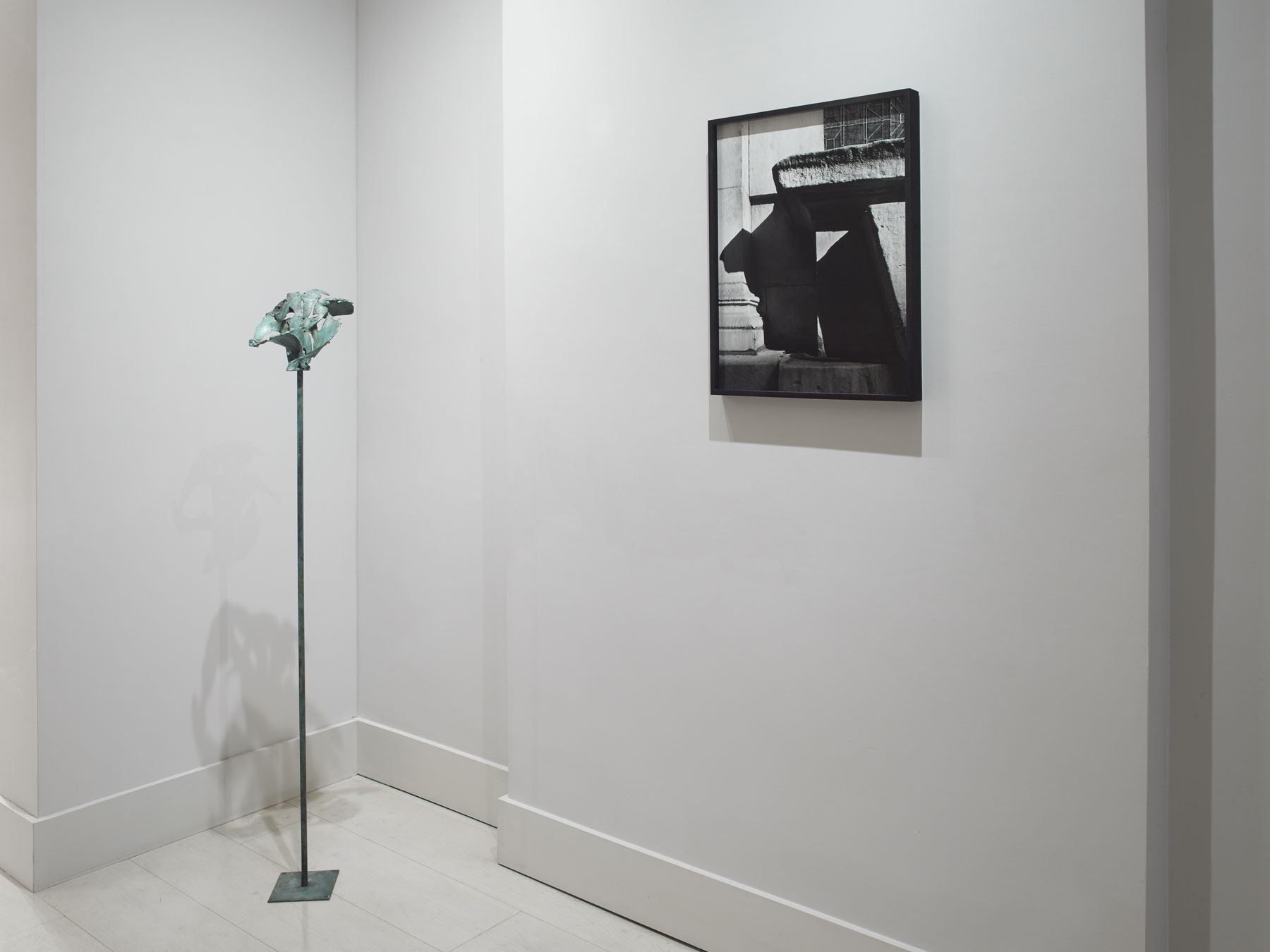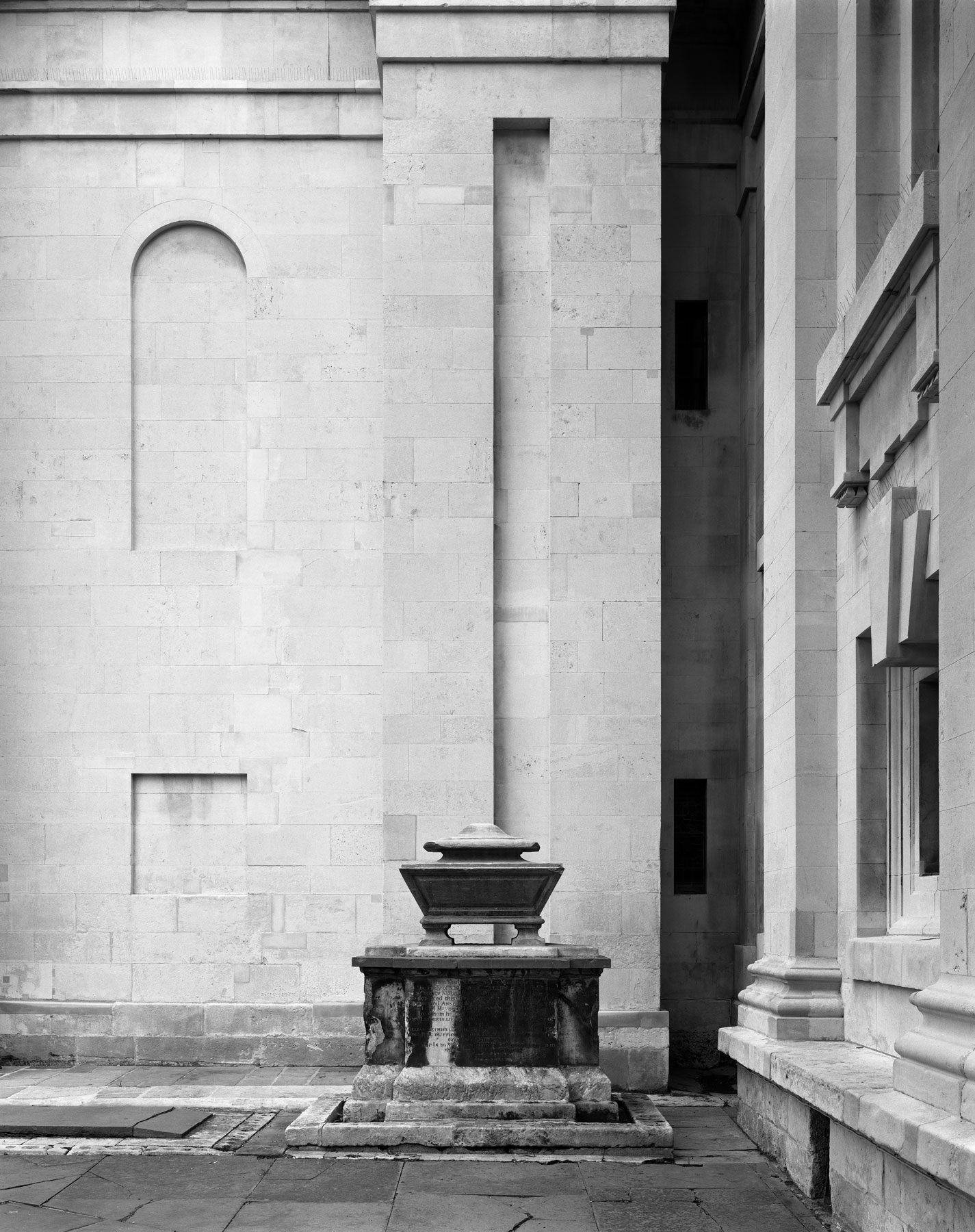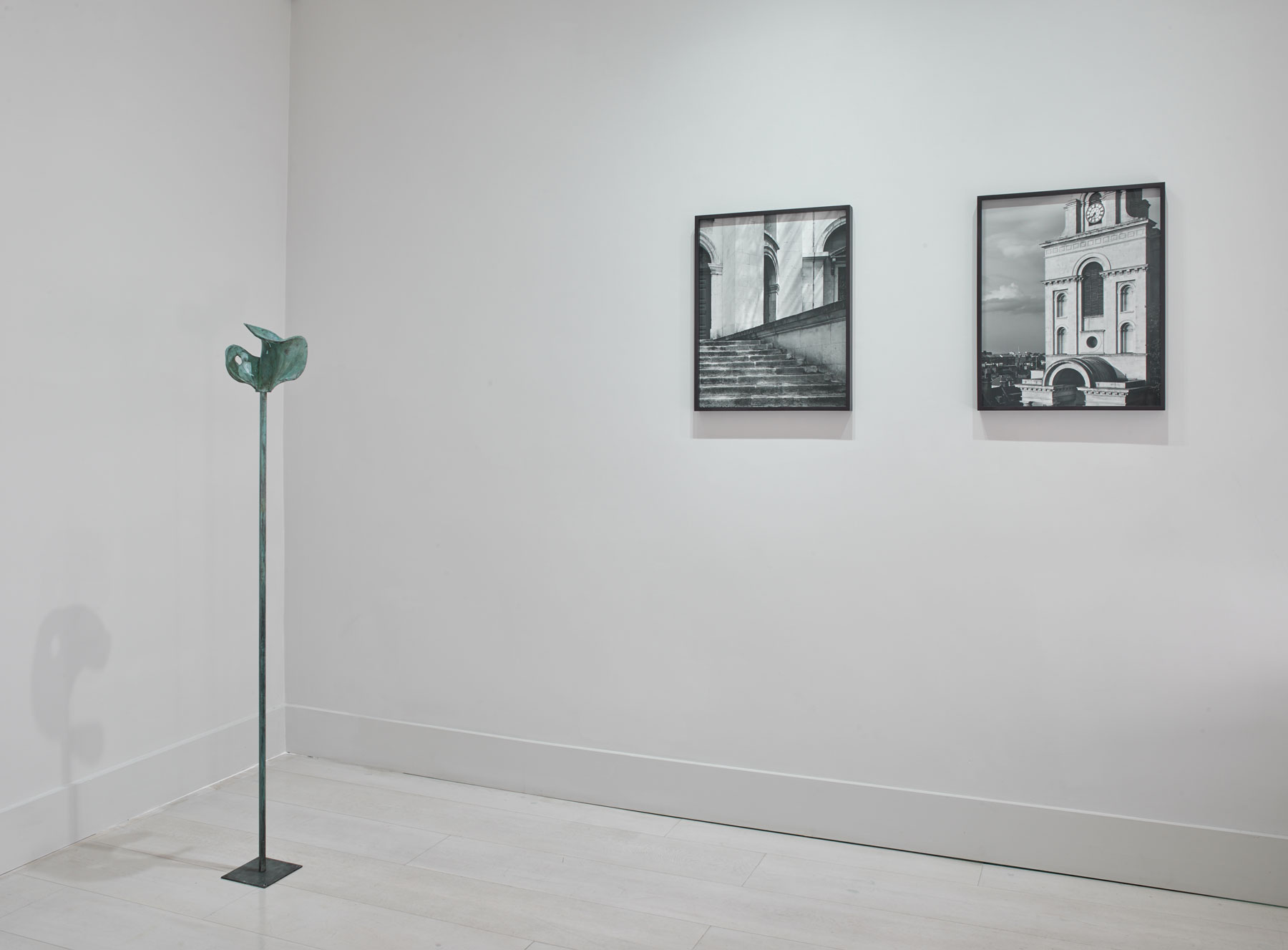









A Coin in Nine Hands: Part One
Hélène Binet (Nicholas Hawksmoor) and Jean-Luc Moulène (Knots)
29 Sep—28 Oct 2017
Marguerite Yourcenar’s novel, A Coin in Nine Hands (1934), follows the journey of a ten-lira coin as it travels between nine different people on a single day in Rome in 1933.
Inspired by this idea, Large Glass presents the work of a range of artists across nine parts or exhibitions over the coming nine months, revealing connections, exchanges, and highlighting some of the hidden bonds that bring artists together.
Part one places Hélène Binet’s architectural photography in conversation with sculptural forms by Jean-Luc Moulène. In 2012, Binet began documenting the early 18th century London churches designed by Nicholas Hawksmoor. She writes:
‘Hawksmoor tried crazy things, his proportions at times are almost mad. That speaks of a kind of transition, not so much of a revolutionary person who changes everything, rather of a subtle and even haunting approach, that you don’t immediately notice. Richard Strauss’ opera is a good comparison: there is a classical structure there in which he sometimes really pushes things that are completely new. It’s a similar attitude of dealing with a tradition and with what you want to do with that.’
The knot – its mathematical function as well as its symbolic significance – has been an on-going interest in Moulène’s art. He translates knot theory, a mathematical system for the description of intricate situations, into art in an effort to deal with its complexity. He writes:
‘Because a knot is a figure, but a figure that goes against our habitual binary way of thinking, since it has no inside or outside. There is no territory: there are several surfaces, yet no territory. After discovering this [knot] theory, I first made two sets of objects, one in bronze and one in glass, which were the concrete materialization of these concepts, these tools.’
Inspired by this idea, Large Glass presents the work of a range of artists across nine parts or exhibitions over the coming nine months, revealing connections, exchanges, and highlighting some of the hidden bonds that bring artists together.
Part one places Hélène Binet’s architectural photography in conversation with sculptural forms by Jean-Luc Moulène. In 2012, Binet began documenting the early 18th century London churches designed by Nicholas Hawksmoor. She writes:
‘Hawksmoor tried crazy things, his proportions at times are almost mad. That speaks of a kind of transition, not so much of a revolutionary person who changes everything, rather of a subtle and even haunting approach, that you don’t immediately notice. Richard Strauss’ opera is a good comparison: there is a classical structure there in which he sometimes really pushes things that are completely new. It’s a similar attitude of dealing with a tradition and with what you want to do with that.’
The knot – its mathematical function as well as its symbolic significance – has been an on-going interest in Moulène’s art. He translates knot theory, a mathematical system for the description of intricate situations, into art in an effort to deal with its complexity. He writes:
‘Because a knot is a figure, but a figure that goes against our habitual binary way of thinking, since it has no inside or outside. There is no territory: there are several surfaces, yet no territory. After discovering this [knot] theory, I first made two sets of objects, one in bronze and one in glass, which were the concrete materialization of these concepts, these tools.’